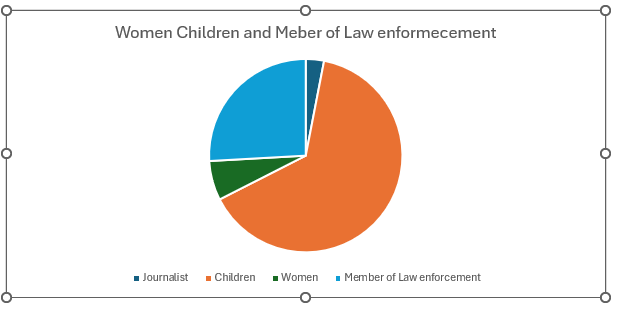Following the student-people uprising, Bangladesh was liberated from dictatorship and autocratic rule on August 5, 2024. More than 1,200 people lost their lives and over 35,000 were injured or disabled to make this July-August movement successful. Under immense pressure from the student-people uprising, dictator Sheikh Hasina transferred power to the military on August 5 and fled to India. For approximately 80 hours after the fall of the Awami League government, there was no functioning government in the country, leading to a chaotic situation. On August 8, at 9:00 PM, the interim government, led by Nobel laureate Dr. Muhammad Yunus, took charge, gradually restoring order.
The Human Rights Support Society (HRSS) has prepared a review report on the deaths in this uprising, based on information gathered from the victims’ families, 12 national newspapers, HRSS’s investigative unit, and volunteers across the country.
Analysis of the Deaths
Centered on the anti-discrimination student-people movement, HRSS has so far received information about the deaths of 986 individuals from sources such as victims’ families, eyewitnesses, hospitals, and national newspapers. Among them, the names of 868 victims have been identified, while 118 remain unidentified. Additionally, based on credible information from media, hospitals, and other sources, it is estimated that the total number of deaths is at least 1,200. The deceased include students, laborers, journalists, professionals, law enforcement members, children, women, and political party leaders and supporters. At least 127 children, 6 journalists, 51 law enforcement officers, and 13 girls and women were killed in the uprising.

Age-Based Analysis
Out of the 986 deceased, information on the ages of 760 individuals has been obtained. The victims ranged from 4-year-old Ahad to 6-year-old Riya Ghosh, representing nearly all age groups. Among the 760 individuals, 127 (17%) were children under the age of 18, 418 (55%) were young adults, 181 (24%) were middle-aged, and 34 (4%) were elderly. A notable finding is that 72% of the victims were under 30 years old.
Occupation-Based Analysis
Out of the 986 deceased, information on the occupations of 556 individuals has been found. Among them, 265 (48%) were students, 133 (24%) were laborers, 51 (9%) were members of law enforcement, 41 (7%) were businesspeople, and 66 (12%) were from other professions. Over 71% of the victims were students or laborers.
Analysis of Causes of Death
The circumstances of death for 879 individuals have been identified. Among them, the majority, 679 (77%), died from gunshot wounds, 91 (10%) died from burns, 84 (10%) were beaten to death, and 25 (3%) died from other causes.
Analysis of Perpetrating Forces or Groups
Information on the forces or groups involved in the deaths of 660 individuals has been obtained. According to the data, 518 (78%) were killed in police attacks, 52 were killed by other law enforcement agencies, 52 by Awami League leaders and activists, and 38 died in mob beatings.
Analysis Based on Dates and Months
According to the available data, out of the 986 deaths, 346 occurred between July 16 and August 3, while 640 occurred between August 4 and October 14. In just seven days (July 18-20 and August 4-7), 852 people were killed. On August 5, the day of Sheikh Hasina’s fall, at least 294 people were killed. During Sheikh Hasina’s rule, from July 16 to August 5, at least 772 people were killed across the country. Between August 6 and 8, when there was no government, at least 164 people were killed. After the interim government took charge on August 9, at least 49 people died between August 9 and October 14, most of whom were undergoing treatment for injuries sustained in previous incidents.
Division-Based Analysis
In terms of regional distribution, out of 977 recorded deaths, 614 occurred in the Dhaka Division, 104 in Chittagong, 80 in Khulna, 65 in Rajshahi, 44 in Mymensingh, 35 in Rangpur, 23 in Sylhet, and 12 in Barisal. The highest number of deaths occurred in the Dhaka Division, with 614 fatalities, while the lowest was in Barisal, with 12 deaths.